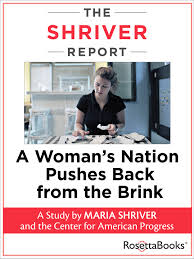Novelette Bethea is a single mother of three, and a full-time college student who drives from her home in Hartford’s South End to work per diem at Gilead Community Services in Middletown.
Bethea has lived through illness, foreclosure, and empty pantries. Though she was uncomfortable doing so, she tried to apply for SNAP – food stamps – but she gave up.
“Every time I called them they’d say they misplaced my paperwork,” she says. These days, if she has to go to a food pantry, she does. If she can work extra hours, she does that, too.
Researchers have a name for Bethea: ALICE — Asset Limited, Income Constrained, Employed — someone who has a job but doesn’t make enough to support an individual, let alone a family. The term comes from a 2009 New Jersey’s United Way study of people in Morris County, where the median household income, according to the U.S. Census, edges toward $100,000.
A subsequent 2011 study of that entire state found that one-third of New Jersey’s households struggle to afford the basics, and between the two studies, the largest increase of ALICE households was among households with children, headed by women.
The United Ways of Connecticut have recently signed on with five other states (including New Jersey) for ALICE studies. The results will be released on Labor Day of this year. The project will “give an identity” to Connecticut residents who are struggling to get by, says Merle Berke-Schlessel, president and CEO of United Way of Coastal Fairfield County. Having the data will help the United Ways – and other organizations – figure out what services are needed.
 Want to lay odds on how many female ALICEs they’ll find in the Nutmeg State?
Want to lay odds on how many female ALICEs they’ll find in the Nutmeg State?
The Census Bureau says Connecticut’s median household income is $69,519 – compared to the U.S.’s $53,046. We consistently rank in the top five richest states, household income-wise, but the Annie E. Casey Foundation’s Kids Count project reports 15 percent of the state’s children live in poverty. From the Children’s Defense Fund: roughly 138,000 children rely on food stamps. These children are overwhelmingly members of households with at least one working adult and usually the mother is working a job that doesn’t pay a living wage.
This year’s The Shriver Report, from Maria Shriver and the Center for American Progress, explored women living on the financial brink. The report says that closing the earnings gap between men and women would cut the poverty rate in half for women; if women were paid for full-time work on par with what men are paid, their incomes would go up by $6,250 a year. That alone would lift 3 million women out of poverty.
According to the Shriver report, women are nearly two-thirds of the minimum wage earners in the U.S. Forty percent of all households with children younger than 18 rely on a female breadwinner. That’s a lot of children looking to get by on less than the bare minimum.
Though she’s in a large demographic, Bethea sometimes feel alone – but she’s hopeful. She wants to get a master’s in social work so she can turn around and help other families like hers.
“It can feel like I’m at the mercy of others,” said Bethea. “But I am passionate and I have my goals. I won’t see myself as a victim. I’m a victor. I can use my experience to help others. I can’t wait to finish school.”
State legislators convene on Feb. 5. It’s a short session, but let’s hope they remember the ALICEs.